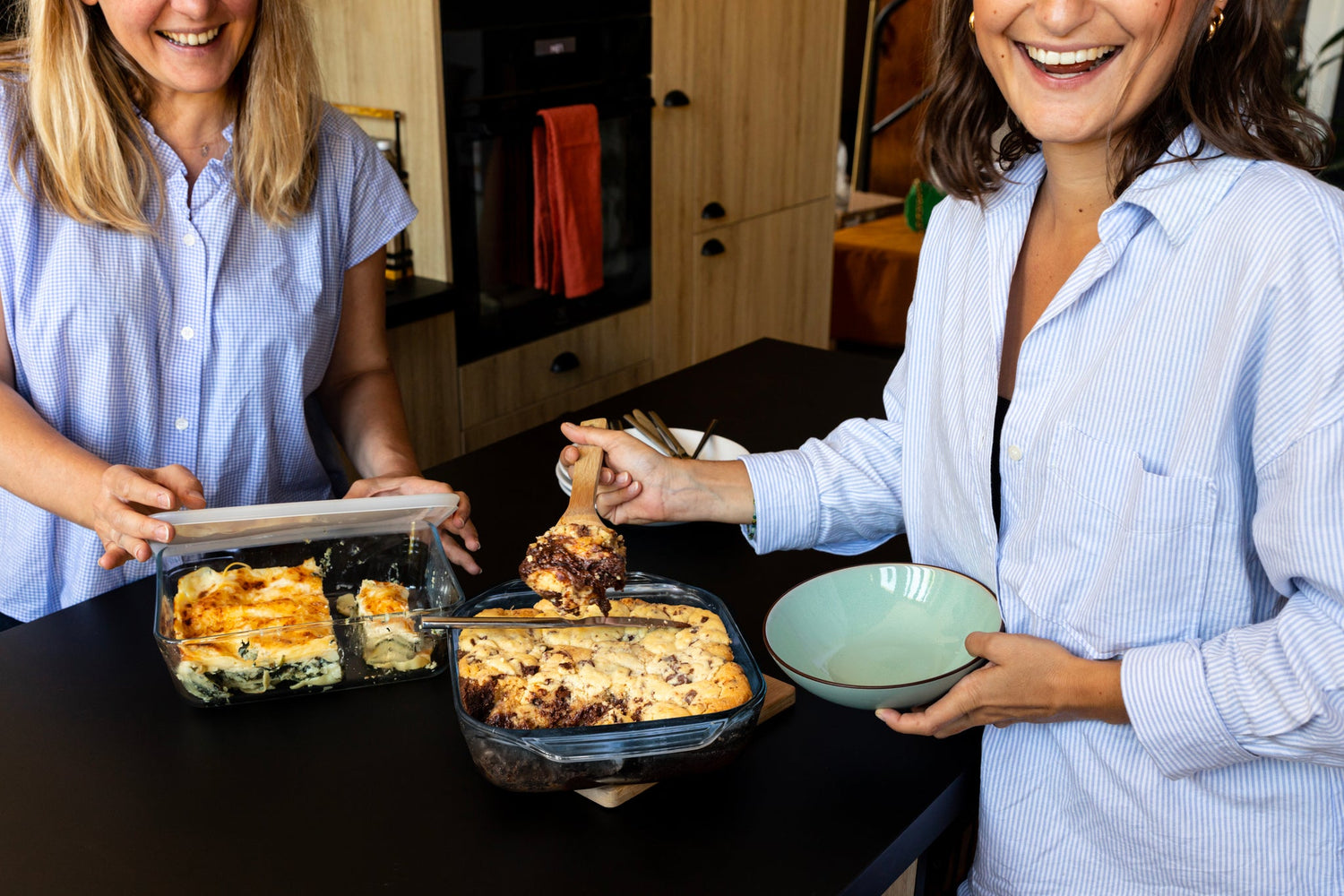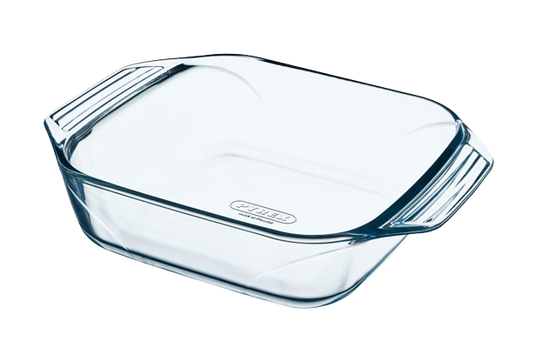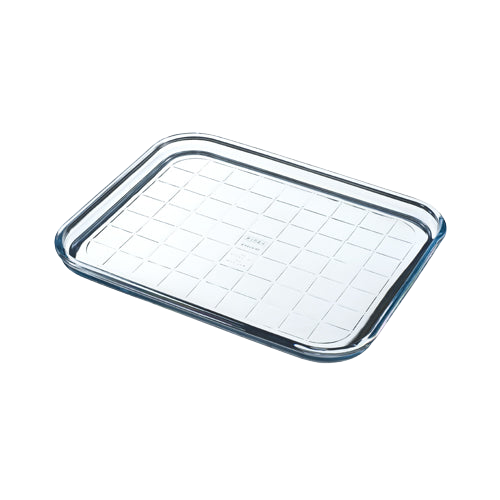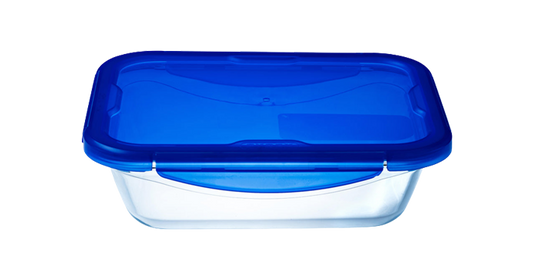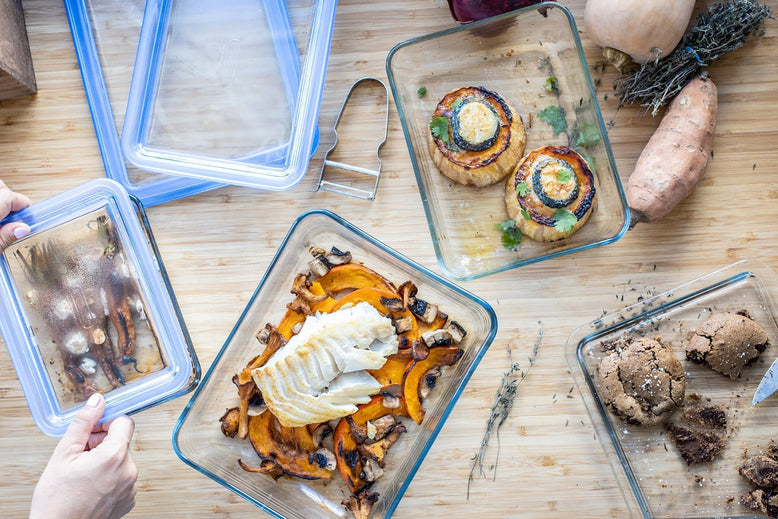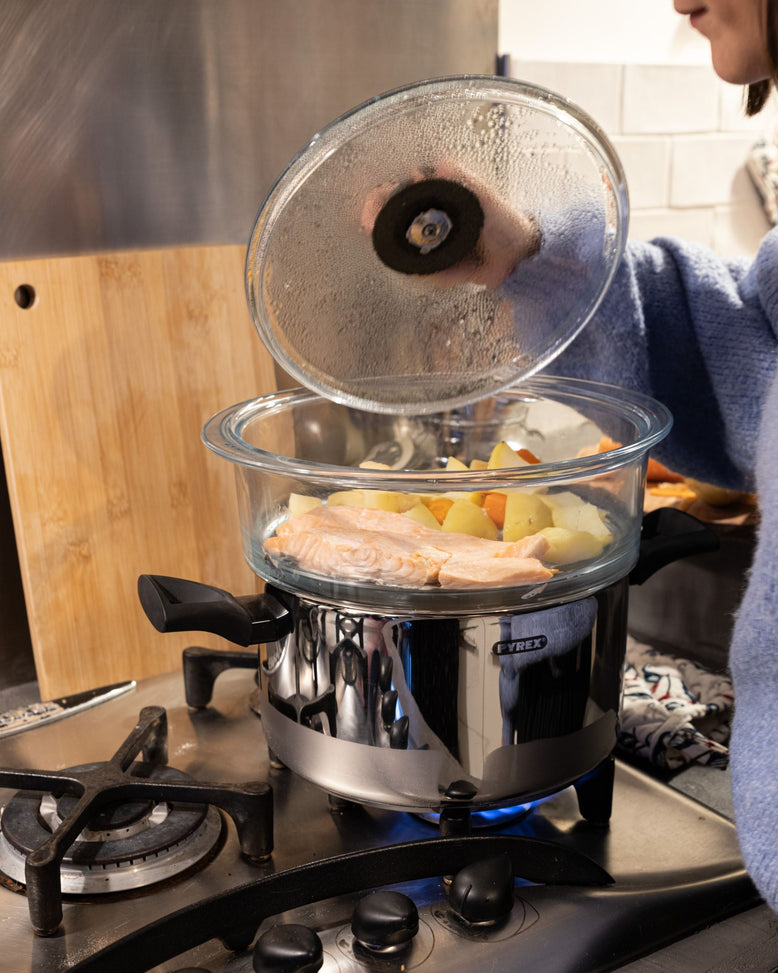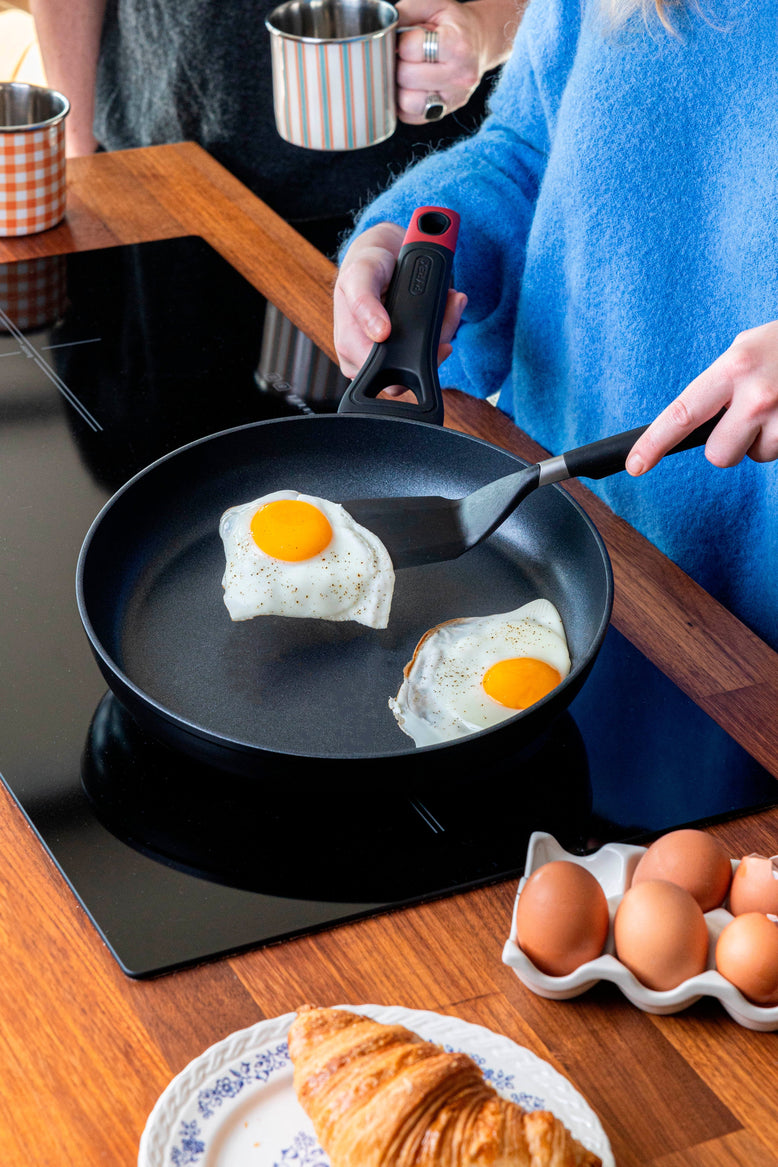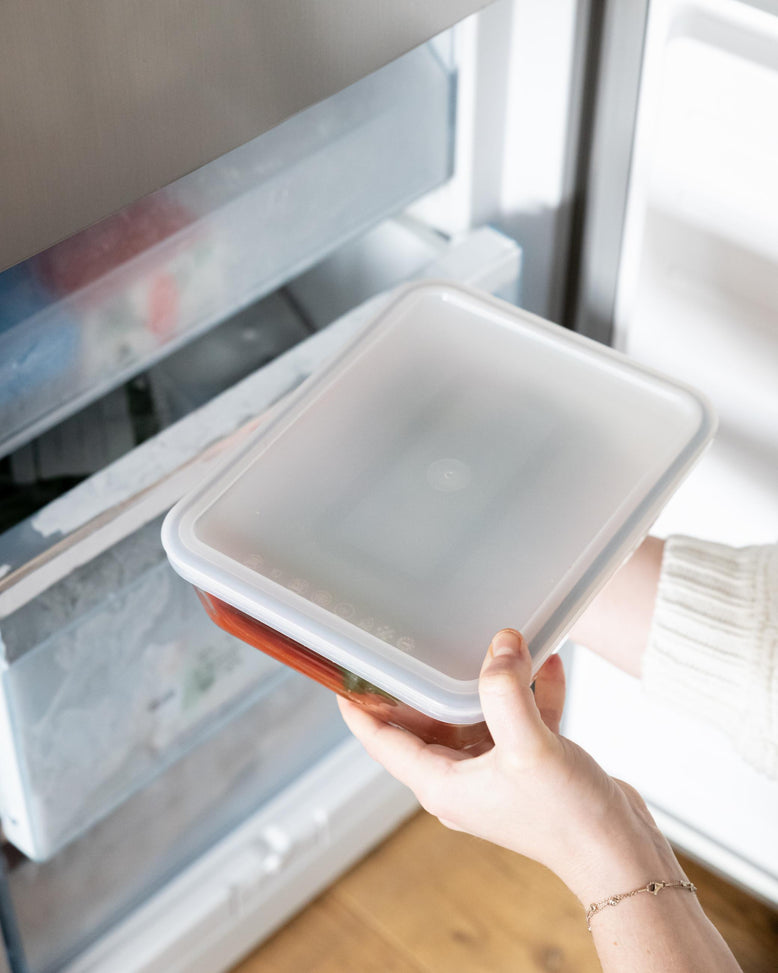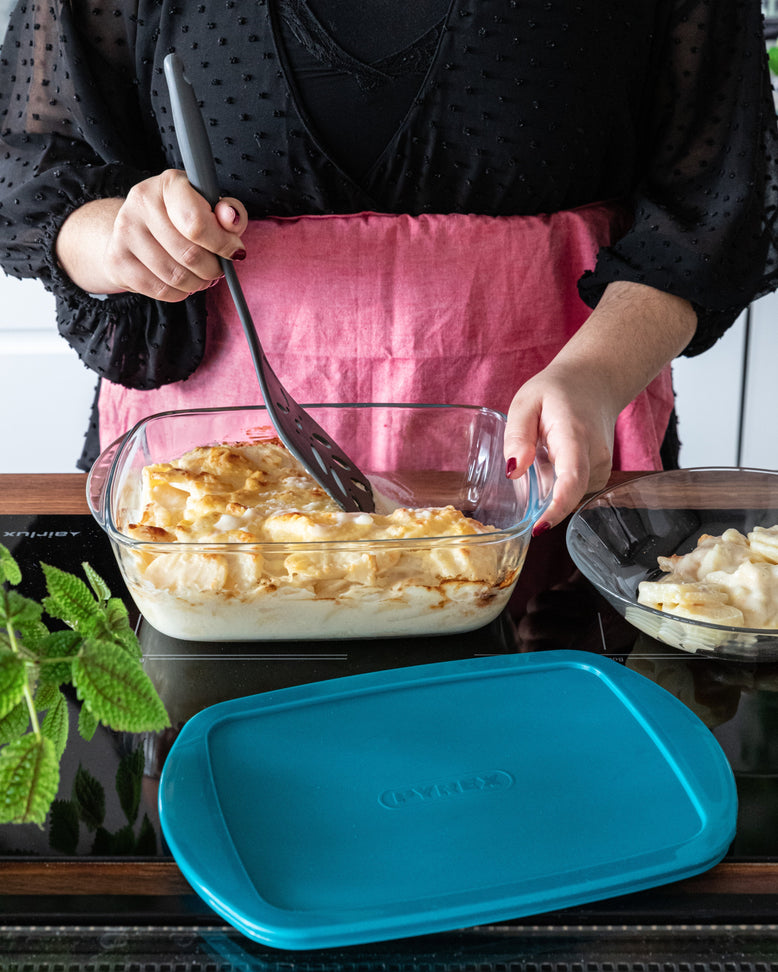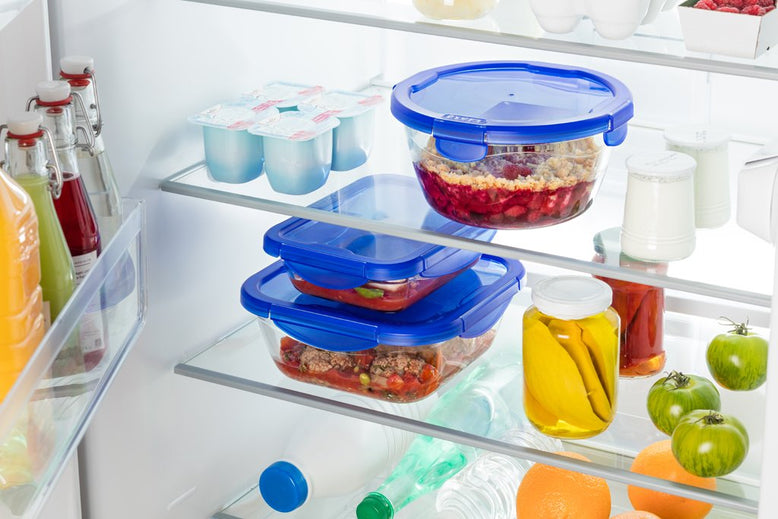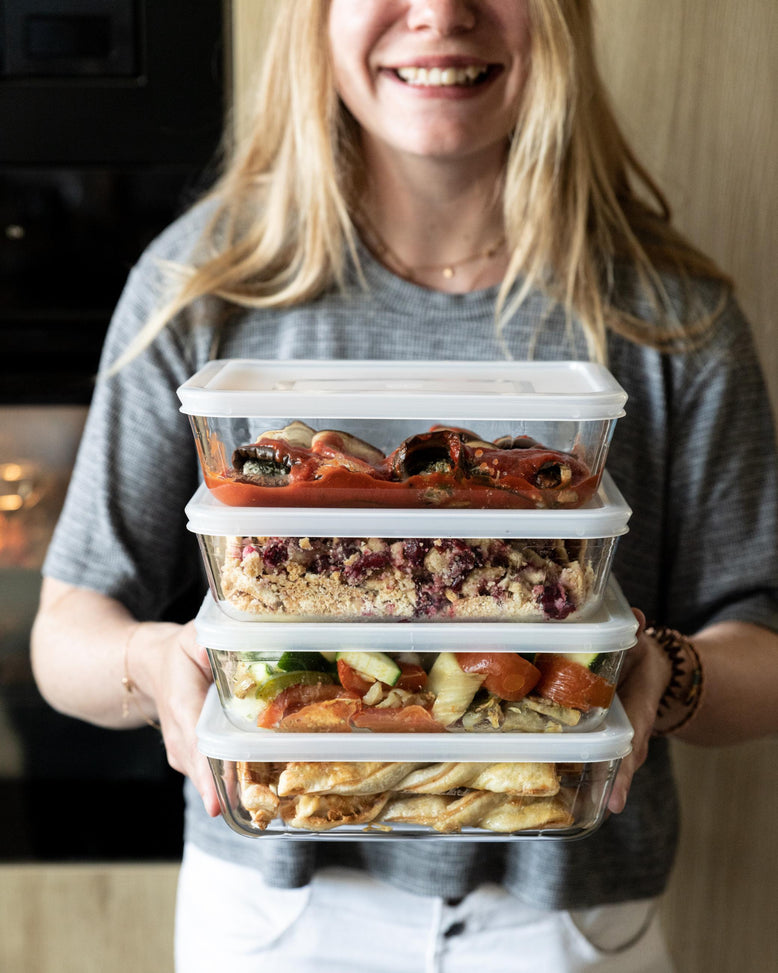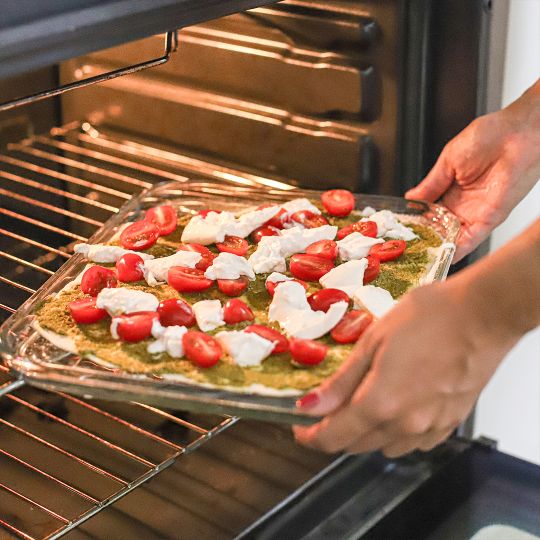Pyrex® tips for choosing the right kitchen utensils and accessories
Forget about blunt knives and warped pans — today’s kitchen has evolved with utensils and accessories that make cooking faster, healthier, and safer by avoiding certain materials that aren’t always good for your health. If you’re wondering how to choose the right kitchen utensils, as well as accessories and containers, you’ve come to the right place: Pyrex® is here to guide you.
Choosing the 18 kitchen utensils you really need
Cooking goes far beyond just a knife, a chopping board, and a mixing bowl. Whether you’re a seasoned cook, a beginner, or someone with plenty — or very little — time to prepare meals, having the right utensils for your culinary needs is one of the keys to successful cooking.
While some utensils are classics, such as the wooden spatula or the whisk, it’s essential that they are above all functional and durable to withstand daily use. Whatever your meal ideas — whether you practise batch cooking or prepare your menus day by day — we’ve selected 18 kitchen utensils that will truly help you get equipped in the kitchen.
Saucepans and stockpots
There’s no need to overload your cupboards with countless pans, stockpots and cookware equipment. Instead, think about optimising each accessory with:
-
A set of saucepans, ideally in aluminium with a coating guaranteed free from PFAS, PFOA and PTFE, like those offered by Pyrex®. Perfect for boiling eggs, cooking rice, wheat, pasta or certain vegetables.
-
One stewpot, such as a cast iron Pyrex® casserole dish with a good-sized lid, ideal for simmering your recipes if you’re not keen on using a pressure cooker. It’s also perfect for boiling potatoes.
-
One wok, a deep frying pan with flared sides commonly used in Asian cooking, ideal for preparing stir-fried meat and vegetables.
-
One crêpe pan, for deliciously indulgent desserts.
Knives and peelers
It’s worth investing a little in a good kitchen knife — it will more than pay you back! Once again, it’s better to have a few high-quality cutting utensils rather than a drawer full of poor ones:
-
A paring knife: with a slim, fairly short blade, this is an ultra-versatile tool for peeling and cutting fruit and vegetables. It should sit comfortably in your hand, so don’t hesitate to try it before buying.
-
A chef’s knife: with a wider, longer blade, perfect for slicing, chopping and mincing meat, fish and vegetables.
-
A Santoku knife: the Japanese knife with 3 or 4 vertical indentations on the blade. Shorter than a chef’s knife, it’s ideal for cutting, chopping and dicing, with the height of the blade giving you precision and control.
-
A peeler: available with a blade aligned with the handle or perpendicular to it. Some even come with interchangeable blades for making julienne vegetables, for example.
-
A pair of kitchen scissors: for cutting everything from herbs to poultry carcasses.
-
A knife sharpener: to take care of your tools and keep them performing well.
Spatulas and chopping boards
-
2 wooden spatulas in different shapes: one rounded and one angled (pay attention to the angle — some are designed for right-handed users, others for left-handed!).
-
A silicone spatula (maryse): perfect for scraping out mixing bowls. Mostly used in baking, it’s ideal for spreading icing or smoothing mixtures. Just remember not to use it directly on the hob.
-
A set of large spoons, a flat spatula, and a heat-resistant plastic strainer.
A chopping board, ideally in olive wood, bamboo, glass or plastic.
Other essential kitchen utensils
-
A whisk, for mixing, beating and making mayonnaise.
-
A manual tin opener, simple and practical for opening tins without pull tabs.
-
A grater, for cheese and zest.
-
2 sieves/colanders of different sizes.
Note: our list of 18 essential kitchen utensils deliberately leaves out small electrical appliances and serving dishes, as these are considered kitchen equipment rather than utensils.
Kitchen utensils: which materials should you choose?
For years, there’s been a battle between kitchenware manufacturers, each competing with new materials for home cooks. But professionals know it well: nothing beats glass, cast iron, and stainless steel!
Materials to avoid in your kitchen utensils
Since food comes into contact with all your utensils, it’s vital to choose materials that are safe, easy to clean, and durable. Here are the ones to be cautious about:
Teflon and PTFE non-stick coatings
Once hugely popular, Teflon lost its appeal when one of its components, PFOA, was found to be unsafe and has been banned since 2020. As for PTFE non-stick coatings, they should never be overheated, scratched with metal utensils, or washed in a dishwasher, which speeds up wear. Best avoided!
Ceramic and enamel non-stick coatings
Although less harmful than Teflon, these pans and pots can still release nanoparticles that may penetrate human cells. Research is ongoing — caution is advised.
Raw aluminium
Once common in pans and stockpots (the ones that left tea towels black when dried!), raw aluminium has been proven to leach small amounts when heated or when in contact with acidic foods like tomatoes or lemon.
► The Pyrex® solution: Pyrex® offers aluminium pans and saucepans with coatings guaranteed free from PFAS, PFOA and PTFE.
Copper
Not suitable for induction cooking. Copper is still favoured by professionals for its rapid heating and cooling, often lined with stainless steel.
Silicone
Always choose high quality. Avoid cheap versions that can contaminate food. Go for platinum-grade silicone moulds, never peroxide-based ones.
The best materials to choose for your kitchen utensils
It won’t come as a surprise that the safest choice is to go back to the basics of cooking (with the exception of copper) and opt for non-contaminating materials such as:
-
Cast iron – a timeless classic for stockpots. An excellent heat conductor, ideal for slow cooking and simmered dishes.
-
Glass – one of the healthiest materials available. Non-porous, perfectly hygienic, recyclable — its qualities are endless. Found in cake moulds, storage containers, and more. Whenever possible, choose glass containers over plastic, such as Pyrex® food storage solutions.
-
18/10 stainless steel – durable, robust, and completely inert. Neutral, it does not release any components into your food.
-
Iron or steel sheet – less common, but affordable and safe for health. Its only drawback is rust, so always dry immediately after washing and avoid dishwashers.
-
Unglazed earthenware (100% natural) – often handcrafted. Successive firings make the dish watertight. It cannot withstand thermal shock, so heat it gently. Before first use, rub the bottom outside with garlic and grease the inside with quality oil after wetting the dish with water.
-
Aluminium with a non-stick coating free from PFAS, PFOA, or PTFE.
-
Ceramic – ideal for oven-baked dishes.
Want more Pyrex® tips and tricks? Don’t hesitate to explore our blog!

